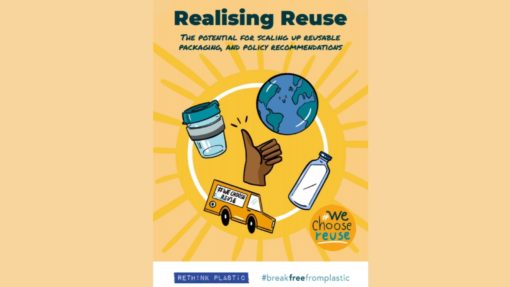
Reuse Report: reusable packaging target of 50% by 2030 in key sectors could reduce 3.7 million tonnes of CO2 and other significant amounts of water, energy and resources
A new report from the Rethink Plastic Alliance and the Break Free From Plastic movement makes the case for reusable packaging and showcases the way towards efficient reusable systems in the EU. According to it, a reusable packaging target of 50% by 2030 in the EU for three key sectors could lead to the reduction of 3.7 million tonnes of CO2, 10 billion cubic metres of water and nearly 28 million tonnes of material.
Based on a study conducted by Circular Economy Portugal, the report highlights the capacity for reuse to thrive with the right sector specific targets, policy frameworks, contributing significantly to circular economy and Paris Agreement objectives, while saving companies and consumers money.
The study focuses on 3 sectors: 1) take-away food containers and cups, 2) mailing packaging for e-commerce clothing and accessories and 3) household care product containers used in large retail.
For these 3 sectors, the report identifies challenges and opportunities, key factors to enable reuse, and a comparative analysis of single-use vs. reusable packaging that delivered significant environmental and economic benefits in favor of reusable systems. The report also gives concrete examples, through case studies, of reusable systems that are already being implemented in various regions across the EU. The methodology of the study is also available with further details on both qualitative and quantitative analysis to assess the environmental and business case of scaling up reusable packaging in three sectors.
In fact, the study reveals the environmental benefits and the existence of viable systems which, if scaled up, can make a formidable contribution to circular economy objectives.
Key policy recommendations to maximise the business case for reuse and therefore its benefits includes sector-specific reuse targets and minimum requirements for packaging, standardisation and simplification of packaging composition and formats, capping single-use plastic usage and investing public funds into research and development are also proposed.